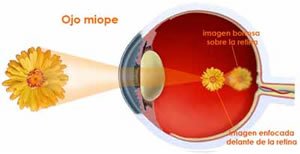LASIK VISION CORRECTION

Laser Vision Correction and LASIK Technology
Essentially, every type of laser vision correction follows the same procedure. Using a laser beam, your surgeon reshapes your cornea. The laser removes small amounts of tissue from the cornea, making the eye a more ideal shape for focusing light.
The difference is, some procedures, such as LASIK, do it more effectively than others.
There are 2 types of laser vision correction procedures, LASIK and LASEK. LASIK tends to be the most popular and talked about, but to help you make an informed decision, we'll introduce both procedures briefly: their pros, cons, and how each varies slightly in execution and results.
| LASIK (laser-assisted in-situ keratomileusis) | LASEK (laser epithelial keratomileusis) |
| • Thin corneal tissue layer pulled back | • Top layer of cornea (epithelium) removed |
| • Eye laser reshaped inside cornea | • After surgery, epithelium must heal on its own |
| • Outer cornea tissue replaced to serve as natural bandage | • Contact lenses act as bandages |
| • Eye heals more quickly and with minimal discomfort, compared to other techniques | • Longer healing time and more discomfort than LASIK procedures |
Why is the procedure?
LASIK surgery is most often performed in people who wear glasses or contact lenses for myopia. Also used to correct hypermetropia and astigmatism.
What is myopia ?
Myopia is usually caused by an eye which is very long, which makes the light rays from distant objects are focused in front of the retina, so that the myopic person, but can clearly see nearby objects.
People who suffer from nearsightedness can see up close but have difficulty seeing objects that are located at a distance.

VISION with myopia

What is hypermetropia ?
People who suffer hypermetropia can see distant objects but have difficulty seeing up close. What happens is that the light rays enter the eye and focus behind the retina, causing a blurred image.
Hypermetropia symptoms vary greatly from poor distance vision, constant or intermittent blurring to work closely or eyestrain.

VISIÓN CON with hypermetropia

What is astigmatism ?
Astigmatism is caused by an irregularity in the curvature of the cornea or the crystalline lens, which causes the light rays entering into the eye and they do not focus on a single point to provide a clear view.
The astigmatic person cannot see the whole picture perfectly clear. Symptoms include blurred or distorted images in severe cases, or headaches, eyestrain and poor manual coordination in low levels.

VISION with astigmatism

What to Expect Before and After LASIK Eye Surgery

- Before LASIK begins, you’ll receive a series of anesthetic drops in each eye. These drops will numb your eyes and help ensure that LASIK is virtually painless—at most, you may feel some light pressure.
- Once the series of drops has been administered and your eyes are numb, you’ll be asked to lie down on a table under the laser equipment. Throughout the LASIK procedure, you’ll be asked to focus on a small blinking light above you. Don’t worry if your eyes move a tiny bit.
- Your surgeon will begin LASIK vision correction by pulling back a thin layer of tissue from your cornea, exposing the underlying tissue so your surgeon can more easily reshape it.
- From there, your surgeon will apply small, very rapid—billionths of a second—bursts of the laser energy to carefully reshape your cornea, making your eye a more ideal shape for focusing light. Flat parts may be made rounder; curved areas may be flattened.
- The personalized map will help guide the laser so you get a precise procedure while maintaining an ideal, natural shape.
- Once your eyes have been reshaped—which normally takes less than a minute—your doctor will lay the corneal flap back into place, where it acts like a natural bandage. No stitches are needed.
Laser vision correction procedures only take a few minutes. It’s simple, quick, and virtually painless.
However, this is still a surgical procedure and with surgery there are risks. LASIK cannot be reversed once the procedure has been performed.
What to Expect During LASIK Surgery
After LASIK Surgery

Many people sit up right after surgery and notice dramatically better vision.* Still, complete recovery can take time—weeks, or months even—and much of the responsibility will be in your hands. So, to get the most out of LASIK vision correction, you need to know what to expect after surgery.
*Results may vary.
Immediately after:
- Most people notice clearer vision right away, sometimes sitting moments after the surgery and finding that their eyes can already focus more accurately.
- Others experience a few slight side effects, including watery eyes; a burning, scratchy sensation; or mild discomfort. These symptoms usually pass within the first few days.
- Your surgeon may also prescribe medications to reduce swelling, discomfort, and to keep your eyes clean and infection-free. Make sure you fill any prescriptions before you return home.
During the healing process, your surgeon may ask that you:
- Use prescription eye drops to prevent infection and reduce any swelling or irritation
- Use an over-the-counter lubricant eye drop to keep your eyes moist and comfortable
- Wear eye shields, particularly during sleep, to prevent irritation
- Wear dark eyeglasses if you experience sensitivity to bright lights
- Avoid rubbing your eyes for a few weeks after surgery
After the first week:
- You should be able to return to normal activities very quickly, depending on how you feel and your doctor’s instructions.
- While many people see clearly by now, in some cases, your vision may seem slightly hazy or blurry. You may be sensitive to bright light, see halos, or have trouble seeing in low light. Everyone responds differently, but usually, these symptoms clear up within weeks, if not days, as the eye heals.
- You could experience fluctuations in vision for up to 6 months after surgery. Be patient and talk to your doctor.1
In most cases, patients have excellent results and are not only free of any serious, long-term complications after their LASIK recovery; they're likely to see as well—or in some cases, even better—than they did with their eyeglasses or contact lenses.
The only major difference is that they're free of eyeglasses or contacts.
